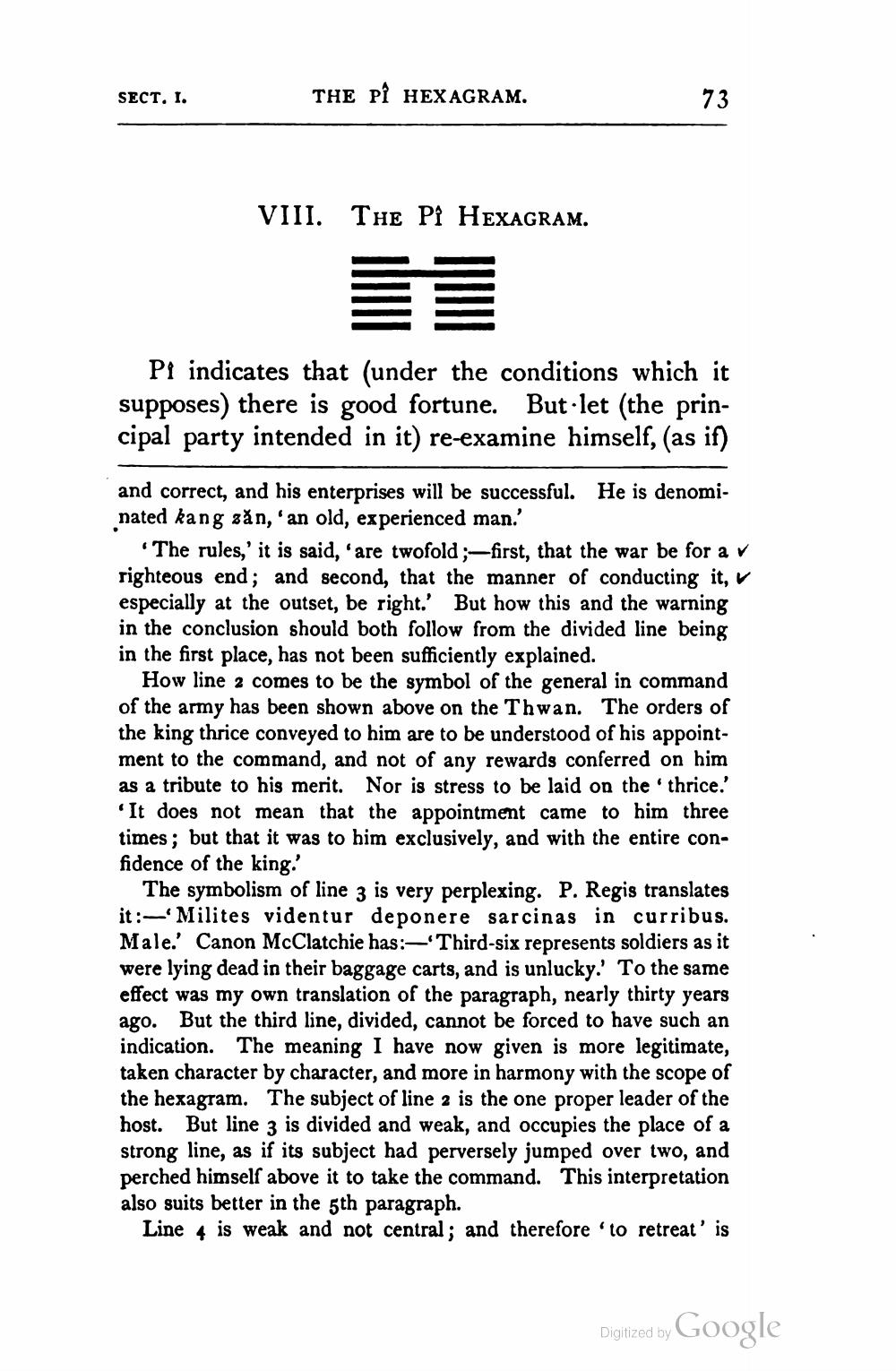________________
SECT. I.
THE PÎ HEXAGRAM.
73
VIII. THE Pỉ HEXAGRAM.
Pi indicates that (under the conditions which it supposes) there is good fortune. But let the principal party intended in it) re-examine himself, (as if)
and correct, and his enterprises will be successful. He is denominated kang xăn, an old, experienced man.'
The rules,' it is said, are twofold ;-first, that the war be for a v righteous end; and second, that the manner of conducting it, especially at the outset, be right.' But how this and the warning in the conclusion should both follow from the divided line being in the first place, has not been sufficiently explained.
How line 2 comes to be the symbol of the general in command of the army has been shown above on the Thwan. The orders of the king thrice conveyed to him are to be understood of his appointment to the command, and not of any rewards conferred on him as a tribute to his merit. Nor is stress to be laid on the thrice.'
It does not mean that the appointment came to him three times; but that it was to him exclusively, and with the entire confidence of the king:
The symbolism of line 3 is very perplexing. P. Regis translates it:- Milites videntur deponere sarcinas in curribus. Male.' Canon McClatchie has:- Third-six represents soldiers as it were lying dead in their baggage carts, and is unlucky.' To the same effect was my own translation of the paragraph, nearly thirty years ago. But the third line, divided, cannot be forced to have such an indication. The meaning I have now given is more legitimate, taken character by character, and more in harmony with the scope of the hexagram. The subject of line 2 is the one proper leader of the host. But line 3 is divided and weak, and occupies the place of a strong line, as if its subject had perversely jumped over two, and perched himself above it to take the command. This interpretation also suits better in the 5th paragraph.
Line 4 is weak and not central; and therefore 'to retreat' is
Digitized by Google




